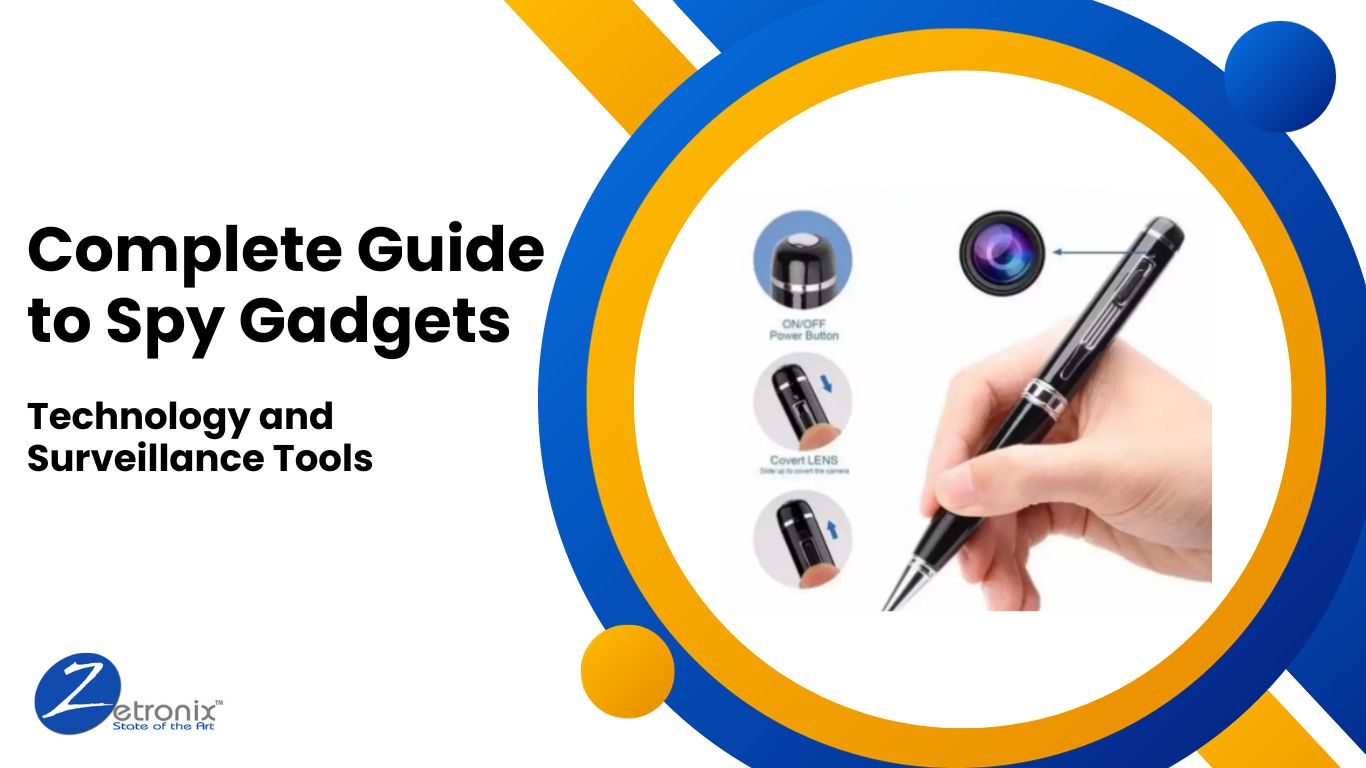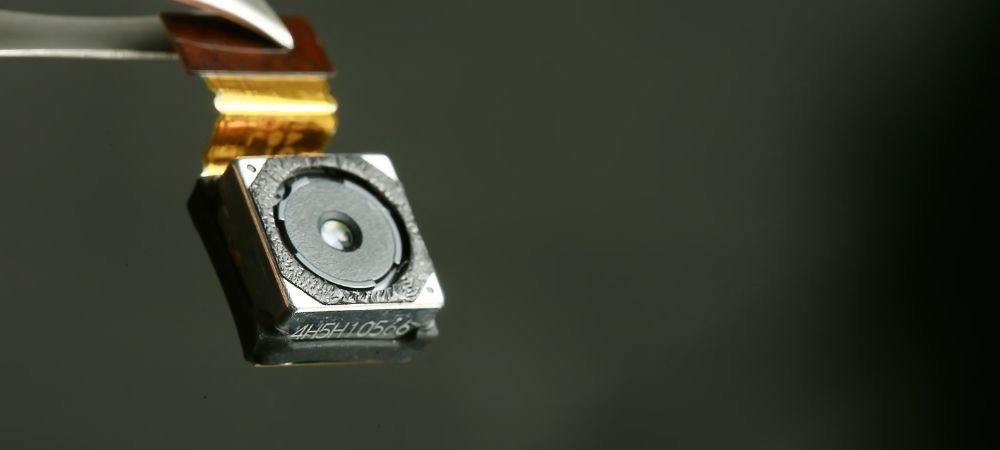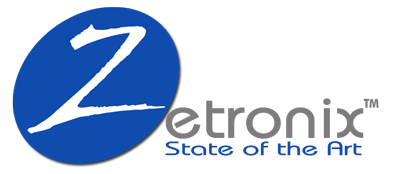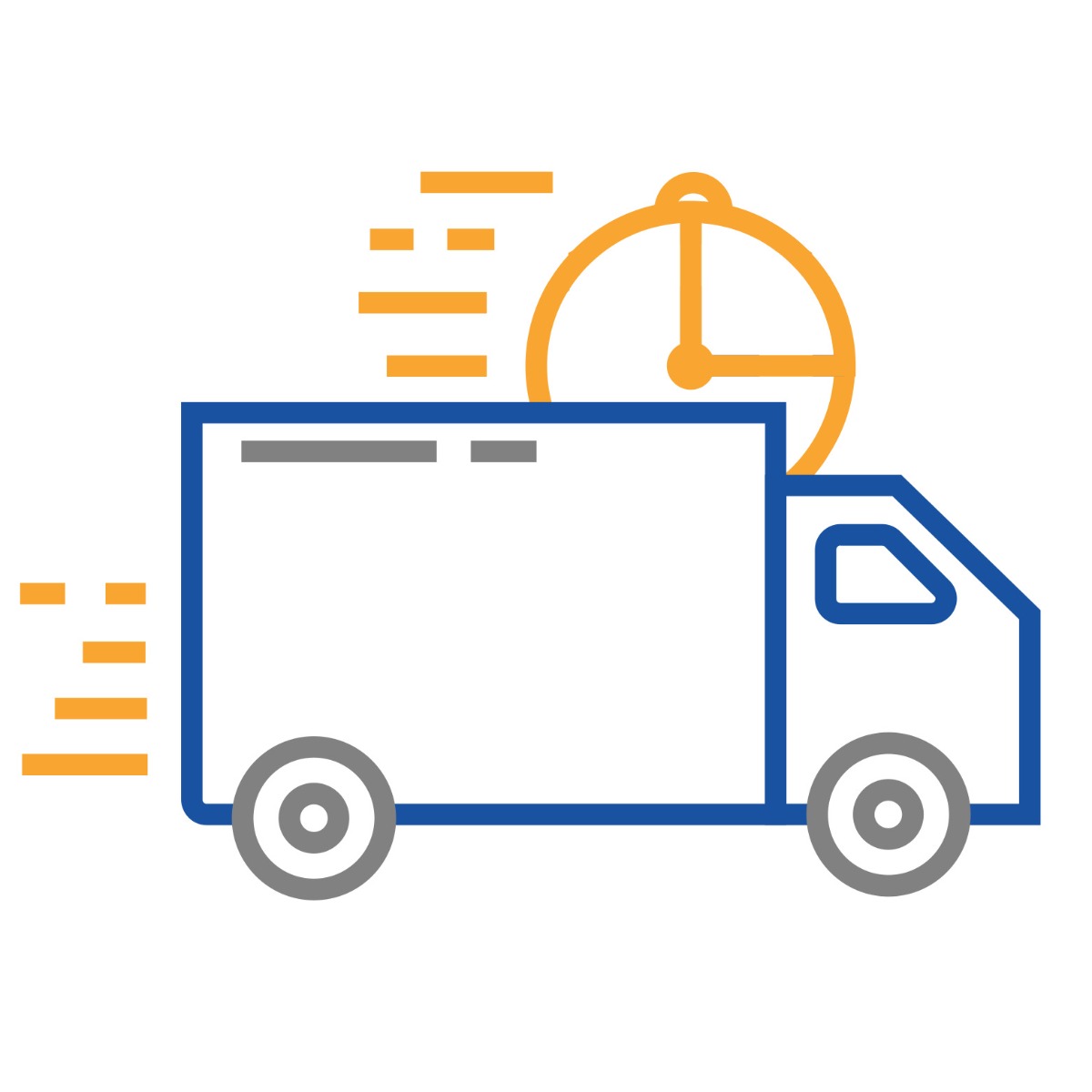Complete Guide to Spy Gadgets: Exploring the World of Covert Technology and Surveillance Tools

Welcome to our comprehensive guide, where we explore the fascinating world of spy equipment, delving into the realm of Hidden Spy Gadgets and the broader category of Spy Gadgets. This guide is your gateway to understanding the intricate world of covert technology and surveillance tools.
Spy gadgets embody the intriguing intersection of technology and secrecy, integral to intelligence and security operations. Often romanticized in popular culture, these tools are rooted in real-world technology designed for discreet surveillance and information gathering.
This guide illuminates spy gadgets' shadowy yet fascinating world, offering an understanding of these covert devices' mechanics, uses, and implications. From cameras no larger than a button to sophisticated tracking systems, a spy gadget demonstrates technology's ingenious application in espionage. We'll explore the various types of gadgets, their evolution, and the legal and ethical considerations surrounding their use.
Evolution of Spy Gadgets: From Past to Present

From the early days of espionage to the modern era, spy equipment has undergone a remarkable transformation. This section traces the journey of spy gadgets, highlighting key developments in hidden spy camera gadgets and professional spy equipment.
Spy gadgets have been integral to espionage for centuries, evolving significantly as technology advanced and intelligence requirements changed. This detailed exploration covers how these devices have transformed from basic, ingeniously crafted tools to sophisticated, high-tech equipment.
Early Espionage Tools: The Foundations

- Concealed Messages: Ancient spies utilized simple methods like hidden writings and secret inks. Techniques included invisible ink, made from natural substances like lemon juice, and steganography, hiding messages in plain sight.
- Basic Listening Devices: Early listening devices were rudimentary. For example, spies in ancient times might have used hollow tubes or walls to eavesdrop on conversations.
- Physical Subterfuge: Disguises and physical concealment were primary tools. Spies often relied on blending in and gathering information through observation and overheard conversations.
The Renaissance to the 19th Century: Mechanical Ingenuity
- Masked Documents: Encryption and coded messages became more sophisticated during the Renaissance. Using ciphers and coded letters was common, with famous examples like the Caesar cipher.
- Early Surveillance Gadgets: The 18th and 19th centuries saw the introduction of more advanced mechanical devices, such as the "ear trumpet," a predecessor to more modern listening devices.
The World Wars: A Technological Leap
- Radio and Telegraphy: World War I and II marked a significant shift with the advent of radio communication. Spies used wireless sets to send coded messages.
- Enigma and Code Breaking: Using machines like the German Enigma highlighted the importance of cryptography in espionage. The Allies' efforts to crack these codes were pivotal.
- Photography and Reconnaissance: High-quality cameras for covert photography and aerial surveillance became crucial for gathering intelligence.
Cold War: The Era of Electronic Espionage
The Cold War era marked a significant advancement in spy equipment. This period saw the introduction of sophisticated spy gadgets, including cold war spy equipment that reshaped the landscape of espionage.
- Wiretaps and Bugs: Electronic listening devices, or bugs, became more common. The U.S. Embassy in Moscow was famously bugged during this period.
- Miniaturization of Devices: The Cold War saw significant advancements in miniaturizing electronic devices, making spy gadgets smaller and more discreet.
- Cryptography Advancements: Electronic methods for encrypting and decrypting messages were developed, leading to more secure communication channels for spies.
The Digital Age: Modern Espionage
- Cyber Espionage: The late 20th and 21st centuries introduced the era of cyber espionage, with hackers and digital surveillance tools becoming key.
- Advanced Miniaturization and Tech: Today's spy gadgets feature remarkable miniaturization and technology, from micro-cameras to drones and GPS trackers.
- Satellite Technology: Satellites have become integral for global surveillance, providing real-time data and imagery.
Adaptability and Innovation in Espionage
- Continued Evolution: As technology advances, so will the tools of espionage. Future gadgets may include more sophisticated cyber tools, AI, and perhaps quantum computing applications.
- Ethical and Legal Challenges: With each advancement comes new ethical and legal considerations, ensuring that the use of such technology remains within the bounds of international law and moral standards.
The history of spy gadgets is a testament to human ingenuity and adaptability, mirroring the broader evolution of technology and the unending quest for information in the shadowy world of espionage.
An array of sophisticated gadgets marks the realm of modern espionage. This comprehensive exploration delves into the intricacies of these devices, focusing on hidden cameras, listening devices, and tracking tools, and addresses their functionalities, applications, legal implications, and ethical considerations.
Hidden Cameras: Eyes Everywhere

In the world of espionage, where secrecy is key, hidden camera spy gadgets really shine with their clever designs. Think about all those cool gadgets like spy pens, glasses, and even nanny cams – they're not just cool, they're essential pieces of modern spying gear.
These modern spy gadgets are amazing examples of what we can do with a bit of creativity and tech know-how. Let's dive into the world of these fascinating devices, looking at hidden cameras, listening devices, and GPS trackers. We'll chat about what they do, how they're used, the legal stuff you need to think about, and even the ethical side of things.
Types and Disguises
- Everyday Object Cameras: Ingeniously hidden in objects like spy pens, glasses, or alarm clocks, these cameras blend seamlessly into everyday environments, making detection difficult. A hidden spy camera is hard to spot.
- Wearable Cameras: Integrated into clothing or accessories, these cameras offer mobility and discretion for on-the-go surveillance.
- Nanny Cams: Commonly used for home security, these cameras are often disguised as toys, picture frames, or other benign household items.
- Outdoor Surveillance Cameras: Designed for exterior use, these are more robust, often featuring weatherproofing and night vision capabilities.
- Spy Glasses: Spy glasses are also valuable gadgets when there is a need for secret surveillance.
Technological Features
- Remote Access and Control: Users can operate these cameras and view footage from anywhere, enhancing their utility for real-time surveillance.
- Live Streaming: Provides real-time video feeds via internet connectivity, essential for immediate monitoring.
- High-Resolution Recording: Ensures the footage is clear and detailed, crucial for identification purposes.
- Motion Detection: Enhances efficiency by recording only when there is movement, conserving storage and power.
- Night Vision: Allows recording in low-light conditions, essential for round-the-clock surveillance in spy cams.
Applications and Usage Scenarios
- Security and Surveillance: Widely used in homes, offices, and sensitive areas to monitor for any unauthorized activities or intrusions.
- Law Enforcement and Intelligence: Crucial for covert operations, evidence gathering, and monitoring of suspects.
- Journalism and Investigations: Used in investigative reporting to uncover truths that otherwise would be difficult to capture.
- Personal Use: For ensuring the safety and security of personal property and loved ones.
Legal and Ethical Considerations
- Consent and Notification Laws: The legalities of recording individuals without their consent vary widely, with some jurisdictions requiring strict adherence to privacy laws.
- Privacy and Ethical Use: The balance between effective surveillance and invasion of privacy is a constant debate, especially in civilian contexts.
Listening Devices: Capturing Sounds Unseen
Spy listening equipment has evolved significantly, becoming a cornerstone of contemporary spy gadgets. This section explores various types of listening devices, from wireless bugs to digital recorders, all crucial elements of spy equipment.
Types of Listening Devices
- Wireless Bugs: Compact, easy to hide, and capable of transmitting audio over distances.
- Wired Bugs: More reliable in terms of signal strength and less prone to interference.
- Digital Recorders: Direct audio recording devices, often used in personal or professional interviews.
- Phone Tapping Devices: Specialized tools for intercepting and recording telephone communications.
Advanced Features and Capabilities
- Encrypted Transmission: Secures audio transmission, preventing unauthorized access and interception.
- Directional Microphones: Target specific sound sources, minimizing background noise.
- Remote Activation/Deactivation: Enhances flexibility and control over the device's operation.
- Voice Activation: Automatically starts recording when voices are detected, ensuring no crucial information is missed.
Deployment Methods and Applications
- Corporate Espionage: Monitoring for information leaks or competitive intelligence.
- Law Enforcement: Essential for evidence collection in criminal cases.
- Private Investigations: Gathering information in personal disputes or legal matters.
- Counter-Espionage Activities: Used by intelligence agencies to detect and prevent spying.
Legal and Privacy Implications
- Compliance with Wiretap Laws: Strict regulations around the use of listening devices, often requiring court orders or warrants.
- Global Legal Variances: Different countries have varying laws regarding the use of such devices.
- Potential Legal Repercussions: Illegal use can lead to severe criminal or civil penalties.
- Tracking Tools: Following Without Being There
GPS Tracking Technology
- Vehicle Trackers: Commonly used for tracking the location of vehicles, whether for personal or business use.
- Asset Trackers: Attached to valuable items or shipments to monitor their location during transit.
- Personal Trackers: Used for safety purposes, tracking the whereabouts of children, the elderly, or individuals in vulnerable situations.
Functionalities and Advancements
- Real-Time Tracking: Offers instant location updates, essential for dynamic surveillance situations.
- Geofencing: Sends alerts if the device enters or leaves a predetermined geographical area, useful in security and logistics.
- Data Logging: Stores historical location data to analyze movement patterns and routes.
- Speed and Route Monitoring: Tracks how fast and by which routes objects or individuals are moving, useful for logistics and law enforcement.
Diverse Applications
- Law Enforcement: Tracking criminal suspects or parolees.
- Fleet Management: Overseeing the location and routes of commercial vehicles.
- Safety Monitoring: For ensuring the safety of children or elderly family members.
- Wildlife Research: Tracking animal movements to study behavior and migration patterns.
Ethical and Legal Considerations
- Respecting Privacy Rights: Navigating the fine line between necessary surveillance and invasion of privacy.
- Adherence to Legal Guidelines: Ensuring the use of trackers is compliant with relevant laws and regulations.
- Consent and Disclosure: Particularly in personal or commercial settings, obtaining permission for tracking is often legally and ethically required.
Legal and Ethical Considerations in Spy Technology
The deployment of spy gadgets raises complex legal and ethical questions, balancing the necessity of surveillance against the right to privacy. This detailed examination covers the legal frameworks and ethical dilemmas surrounding spy technology.
Legal Frameworks Governing Spy Gadgets
- Variability Across Jurisdictions: Different countries have distinct laws regulating the use of surveillance tools. For instance, some countries may allow broader use of surveillance by law enforcement, while others have stricter privacy protections.
- Consent and Notification Requirements: Many jurisdictions require consent for recording conversations or require notification that surveillance is occurring. These laws are designed to protect individuals from unauthorized monitoring.
- Surveillance in Public vs. Private Spaces: The legality of using spy gadgets often depends on the location. Public spaces generally have fewer privacy protections compared to private settings.
- Court Orders and Warrants: In many cases, especially for law enforcement, using certain types of surveillance equipment requires a court order or a warrant.
- International Laws and Treaties: Some international laws and agreements govern the use of surveillance technology, especially in matters of cross-border intelligence and espionage.
- Corporate and Workplace Surveillance Laws: Regulations often differ regarding monitoring employees, with certain legal expectations and limitations on what employers can do.
Ethical Dilemmas and Considerations
- Privacy vs. Security: The classic dilemma in using spy gadgets is balancing individual privacy rights with the need for security and intelligence gathering. Finding a middle ground is often challenging.
- Potential for Abuse: There's always a risk that surveillance tools can be misused for personal gain, harassment, or other unethical purposes. This risk necessitates stringent controls and oversight.
- Impact on Society and Trust: Pervasive surveillance can erode trust within a society, leading to a feeling of being constantly watched and potentially altering behaviors in negative ways.
- Use in Private Investigations and Corporate Espionage: The ethical considerations extend beyond government use, particularly in private investigations and corporate espionage, where motivations can be less clear-cut.
- Data Security and Handling: Data collection through surveillance raises questions about its security and how it's handled, stored, and potentially shared.
- Consent in Covert Operations: In covert operations, obtaining consent is not feasible, which raises ethical questions about the justification of such surveillance.
Navigating Legal and Ethical Landscapes
- Adhering to Legal Standards: Those using spy gadgets must be knowledgeable about and adhere to relevant laws and regulations, ensuring their actions are legally defensible.
- Ethical Decision-Making Frameworks: It's crucial for agencies and individuals involved in surveillance to establish and follow ethical guidelines that consider the broader implications of their actions.
- Oversight and Accountability: Effective oversight mechanisms, such as judicial review or independent oversight bodies, are essential to prevent abuse and maintain public trust.
- Transparency and Public Discourse: Engaging in open discussions about the use and impact of surveillance technology can help balance security needs with protecting privacy rights.
- Continuous Re-evaluation of Laws and Ethics: As technology evolves, so must the legal and ethical frameworks that govern its use, requiring ongoing assessment and adjustment.
The Future of Spy Gadgets: Predictions and Possibilities
The landscape of spy gadgets is continually evolving, driven by rapid technological advancements and shifting geopolitical dynamics. This section explores the potential future developments in covert technology and the implications they may have on surveillance and intelligence operations.
Technological Advancements in Spy Gadgets
- Integration of Artificial Intelligence (AI): AI is expected to revolutionize spy gadgets, enhancing capabilities in data analysis, facial recognition, and automated surveillance. AI-driven tools could potentially identify patterns and anomalies in data much faster than humans.
- Enhanced Miniaturization: The trend towards smaller, more discreet devices will likely continue, allowing for even more inconspicuous surveillance. This could lead to gadgets that are nearly invisible to the naked eye.
- Quantum Computing: If integrated into spy technology, quantum computing could offer unprecedented data processing speeds and capabilities, including the potential to break traditional encryption methods.
- Advanced Biometric Surveillance: Future gadgets may include more sophisticated biometric tools that identify individuals through unique biological patterns like heartbeats or gait.
- Increased Drone and Robotic Use: Drones and autonomous robots could be deployed for surveillance in difficult or dangerous areas for humans to access.
- Cyber Surveillance Tools: With the growing importance of the digital domain, advanced tools for cyber surveillance, including sophisticated hacking tools and network infiltration devices, are likely to be developed.
Implications of Technological Advancements
- New Capabilities in Intelligence Gathering: These advancements will provide intelligence agencies with powerful tools for gathering information, potentially transforming the nature of espionage.
- Enhanced Counter-Surveillance Measures: As surveillance technology advances, so will counter-surveillance techniques, leading to a continuous innovation cycle in both fields.
Ethical and Privacy Challenges
- Increased Potential for Privacy Invasions: With more powerful and discreet surveillance tools, the potential for privacy infringements escalates, raising significant ethical concerns.
- Challenges in Regulation and Control: Keeping pace with rapid technological changes challenges regulators and policymakers, who must ensure that laws and frameworks are updated to address new technologies.
- Global Surveillance Disparities: The advancement in spy technology may widen the gap between countries with access to cutting-edge tools and those without, potentially impacting global power dynamics.
FAQs:
What are the potential impacts of artificial intelligence on spy gadgets?
AI is set to significantly enhance the capabilities of spy gadgets, especially in areas like automated data analysis, facial recognition, and pattern detection. AI could enable real-time processing of large amounts of data, identifying threats or targets more quickly and accurately than human operatives.
How will enhanced miniaturization affect the future of surveillance tools?
Enhanced miniaturization will make spy gadgets even smaller and more discreet, allowing for more covert operations. These advancements could lead to virtually undetectable devices, posing new challenges for privacy and security.
What role might quantum computing play in the development of spy technology?
Quantum computing could revolutionize spy technology by offering unparalleled data processing capabilities. It has the potential to break traditional encryption methods, reshaping the landscape of cybersecurity and intelligence.
Are there ethical concerns associated with the advancements in spy technology?
Yes, advancements in spy technology raise significant ethical concerns, particularly regarding privacy and civil liberties. The potential for misuse or overreach is a major concern, necessitating strict regulatory frameworks and ethical guidelines.
How might global surveillance disparities affect international relations?
The gap in surveillance capabilities between nations could lead to imbalances in global power dynamics. Countries with advanced spy technology might have significant advantages in intelligence gathering, potentially affecting international relations and national security.
What steps can be taken to ensure the ethical use of advanced spy gadgets?
There should be a continuous dialogue among technologists, policymakers, and ethicists to ensure ethical use. Updating legal frameworks to keep pace with technological advancements, establishing clear guidelines for use, and ensuring transparency and accountability in surveillance practices are crucial steps.
Conclusion:
The world of spy gadgets is rapidly evolving, driven by breakthroughs in artificial intelligence, miniaturization, and quantum computing. These advancements significantly enhance intelligence-gathering capabilities and bring new ethical and privacy challenges.
The future of espionage technology will not only reshape the methods of intelligence operations but will also necessitate a careful reassessment of legal and ethical frameworks. Balancing the innovative potential of spy gadgets with the imperative to protect individual rights and maintain societal values is crucial. If you want to buy any of these gadgets, shop at Zetronix!




